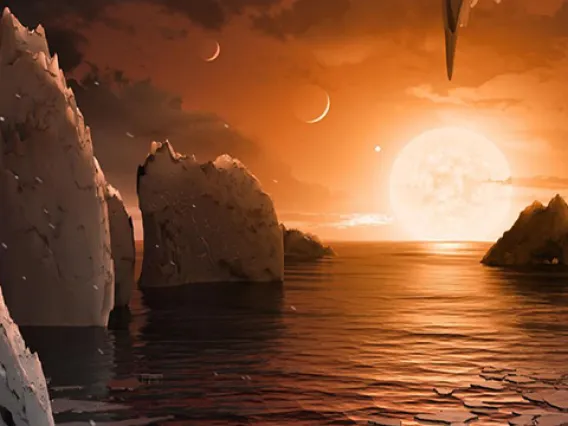LPL Spotlight Stories

How the UA Guided Men to the Moon
The maps and images created by a small UA team at the start of the space race opened the door for lunar and planetary exploration 50 years ago.
Ion Beams and Atom Smashers: Secrets of Moon Rocks
Moon samples collected by the Apollo astronauts a half-century ago hold answers to questions that weren't even on scientists' minds at the time, as new technological tools provide insight into some of the oldest mysteries about the moon, the earth and the solar system.
Moon Maps, Lunar Origins and Everything Between
A theory for the origin of the moon germinated in the mind of a UA graduate student as he mapped the surface. The theory is still cited today as scientists continue to learn more about our celestial neighbor.Dr. Laurel L. Wilkening, 1944 - 2019
Cosmochemist Laurel L. Wilkening (1944-2019) began her career at LPL in 1973, joining the faculty as an Associate Professor. Her

LPL Expertise Key in Mapping the Moon's Surface
Press Release, UA Communications - June 5, 2019 On July 20, 1969, the first humans stepped onto the moon completing

On Mars, Sands Shift to a Different Drum
In the most detailed analysis of how sands move around on Mars, a team of planetary scientists led by LPL found that processes not involved in controlling sand movement on Earth play major roles on Mars.

Researchers Find Ice Feature on Saturn’s Giant Moon
Rain, seas and a surface of eroding organic material can be found both on Earth and on Saturn’s largest moon, Titan. However, on Titan it is methane, not water, that fills the lakes with slushy raindrops.

What Deep Learning Reveals About Saturn’s Storms
A new technique allows researchers to dive deep into the ringed-giant's atmosphere to gain insights into Saturn's storms on a large-scale.

Ashes of a Dying Star Hold Clues about Solar System's Birth
A dust grain forged in a stellar explosion predating our solar system reveals new insights about how stars end their lives and seed the universe with the building blocks of new stars and planets.

Powerful Particles and Tugging Tides May Affect Extraterrestrial Life
Two new studies by UA space scientists may bring into question the habitability of TRAPPIST-1 exoplanets, three of which are in the habitable zone of space.
Pagination
- First page
- …
- 17
- 18
- 19
- …
- Last page

